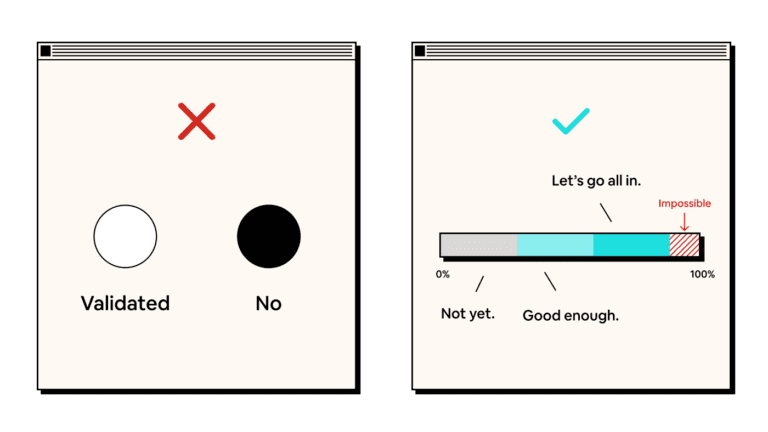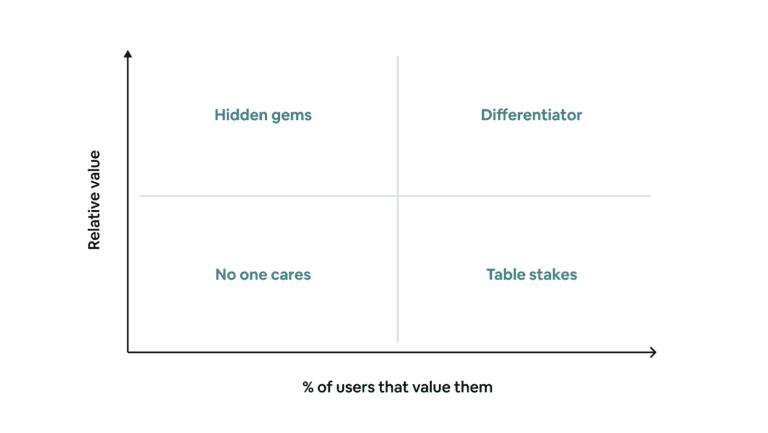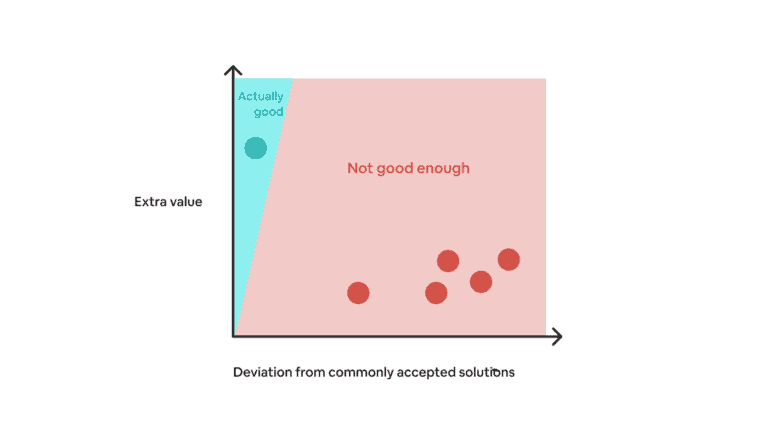We talk about idea validation a lot when building products.
Every product manager knows the importance of validating an idea in the cheapest way possible before doubling down on it.
While this is generally a good mindset, the nuances behind the term “validation” are not discussed enough. I cringe a little whenever I hear statements like “This idea is validated!” thrown around carelessly.
Remember, the method you use to validate your idea is just a proxy. How you select, execute, and interpret that proxy involves thousands of variables that could lead to drastically different conclusions.
If you reduce a result into a simple TRUE / FALSE:
- Your team will make future decisions based on this oversimplified conclusion and overlook the possibility that it might be impartial or biased.
- Important details will get lost. E.g. “The solution works for most of our users, but we did learn that it can cause severe problems in one edge case.”
Many product teams struggle to make progress in their discovery process simply because they can’t get past this binary thinking.
So, here is what to do instead…
Think of idea validation as a confidence scale.
The more evidence you gather, the more certainty you have. However, it’s impossible to ever reach 100% certainty.
Once you start viewing validation as a scale, you will realize that assigning a confidence level to an idea is simply step one. What is “confident enough” for you to act on is an entirely different decision:
- If you’re validating a new feature that requires very little effort to build and has no downside, a small positive signal might be enough to move forward with it.
- If you’re evaluating a strategy that can change the company’s direction for the upcoming years, you will need strong evidence from multiple angles before a full-scale rollout.
With this different framing, you will retain far more nuances from your validation process. Even if your team cannot come to a consensus on the current level of confidence, you can at least get a sense of the gap. This can help facilitate a more productive conversation about how to move things forward.
As a result, you will make better product decisions as a team.




